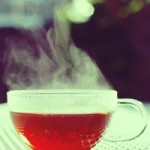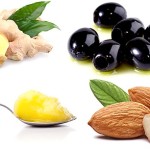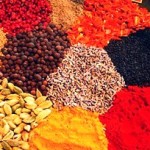The interesting thing about managing such dual dosha types (and dual doshas are very common) is that the foods, which pacify the one, may aggravate the other, and this was […]

Ayurveda is the “Science of Life’ – this is what the word means in Sanskrit. It is an ancient Indian medical science, which has been practiced for around 5000 years. Originally it was an oral tradition, but there are ayurvedic texts dated 2000 years back, such as Charaka Samhita, Sushruta Samhita and Ashtanga Hridaya.
Ayurvedic medicine has a lot of things in common with the Traditional Chinese, Tibetan and ancient Greek medicine (probably, Greeks adopted some of the concepts, since ayurvedic texts are more ancient than Greek ones).
Ayurveda is known for its holistic approach to health, and the major concept behind it is the Balance at all levels of human existence: body, mind, emotions, environment and even relationships.
Balance doesn’t mean that we are all the same; the basis for such balance is the regulation of Prakriti (Ayurvedic constitution), represented by three Doshas (bodily types): Vata (air), Pitta (fire) and Kapha (liquid). These three Doshas are there in each body, in a unique combination. When they come out of balance, a disease occurs. According to Ayurveda, maintaining the natural balance of Doshas means being healthy. Treatment is bringing the Doshas back to balance; once it’s done, the disease will be cured. For this there are different methods and remedies.
Among the various methods used in this ancient medical science, the most popular are:
The amazing thing about Ayurvedic medicine is that it is still valid today; if used properly, it is effective and safe; it helps to bring your body and mind back to natural balance they once had.

The interesting thing about managing such dual dosha types (and dual doshas are very common) is that the foods, which pacify the one, may aggravate the other, and this was […]

Vata Pitta Meaning According to Ayurveda According to Ayurveda our bodily constitution is made of three doshas: Vata, Pitta and Kapha, which determine our bodily and mental state, our emotions […]

Vata Kapha Dosha Characteristics First of all, there are two sides of this matter: one is a person of Vata Kapha dosha type, and the other is Kapha-Vata type. Doesn’t […]

There are various ways to balance Vata dosha, and the more you combine the better. Vata is naturally light, cool, changeable, quick-moving and dry, so balancing it means minimizing these […]

The first point to consider here is that we may have Vata dosha as our dominant dosha, or as a secondary one. When we have Vata dosha imbalance, and Vata […]

Triphala benefits come from its components namely Amalaki (Emblica officinalis), Haritaki (Terminalia chebula), and Vibhitaki (Terminalia belerica) – as they are called in Sanskrit. That is why it is known […]

The balancing lifestyle for Vata Dosha is aimed at reducing Vata’s qualities such as being cold, dry, changing and light, which occur in excess when the dosha is out of […]

Vata dosha is a combination of Air and Ether elements; it is cold and dry, irregular and agile, so to bring it back to balance you need to use essential […]

We have already touched the balancing diet for Vata dosha, now let’s see what are the best and the worst foods for Vata. Preparing meals for Vata becomes much easier […]

What is a Balancing Diet for Vata Dosha? While there are many things that can aggravate a dosha, food is one of the most influential factors, which we ‘face’ on a […]